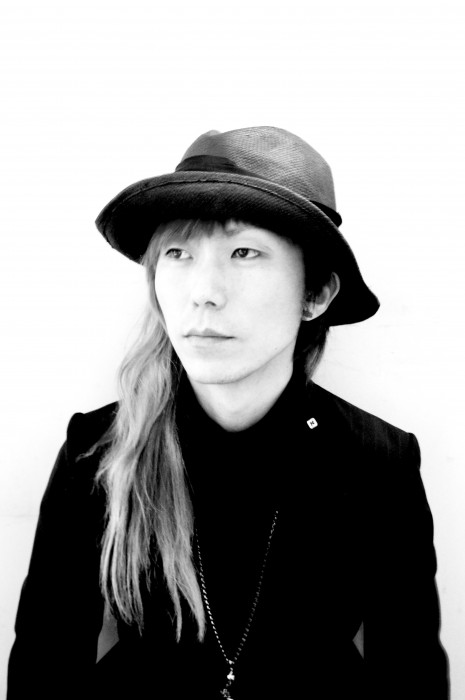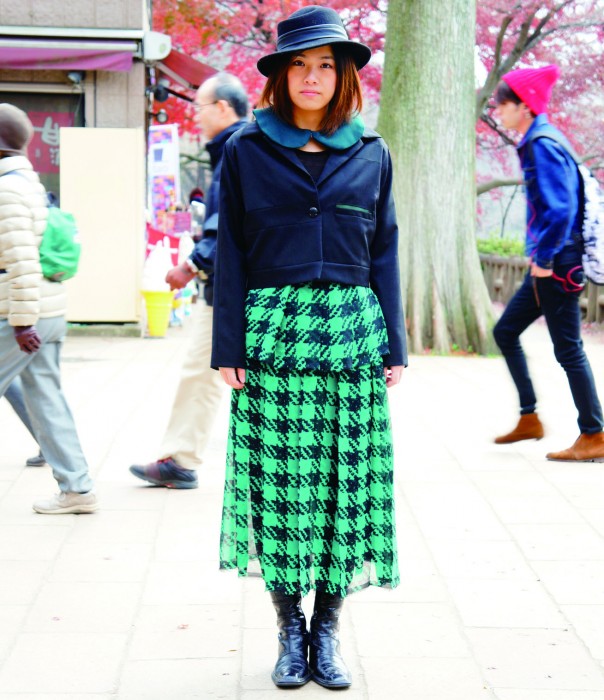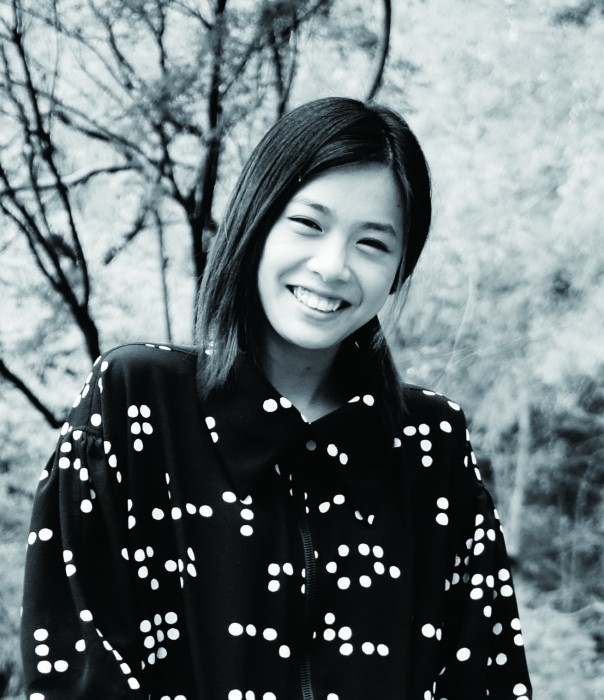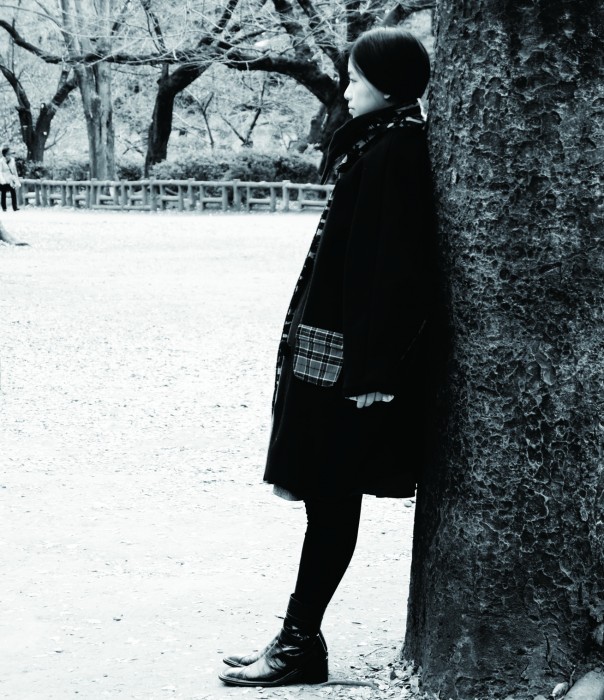Newcomer brand questionnaire / ha ha
ha ha
Designer
Takafumi Tsuruta
Category
Men’s, Women’s & Kid’s / Clothing, Hats, Bags, Accessories and other
Brand information / About the designer
―What inspired you to become a fashion designer? Describe developments leading up to the brand launch.
The initial start was a senior employee I met during my part time job (convenience store) as a sophomore in high school. Even though she was a girl, she was very avant-garde with a shaved head and put Vivienne Westwood and COMME des GARCONS from head to toe. Thanks to her influence I gained an interest in fashion and came to love Harajuku. Despite having no money, I was happy going to Harajuku every weekend and just standing outside of Laforet to look at people’s fashion. Without hesitation, I changed from continuing on to university to a vocational school to become a designer. Upon entering school, my first setback was realizing how high level my peers were. I only joined because I simply liked clothing; I didn’t know the names of designers very well nor could I draw design images at all. I thought it was possible that I wouldn’t be able to become a designer. However, I did have a couple of things I would never lose to anybody. That was, “go through a five hour round-trip commute to school for three years without missing any classes” and “put forward effort.” Surrounded completely by peers overflowing with talent… Although those aimed at landing a position as designers continued to fall, “As long as I try something will happen,” I thought as I continued to endeavor, ending with a job offer. It was the instant in which an ordinary hard worker became a designer. What I am trying to stress is that, anybody can become a designer! Since then, every day I’m absorbed in studying. “Learn one thing about fashion each day.” Over the eleven years since becoming a designer, there isn’t one day in which I haven’t done this. Finally it feels like I became a designer.
“ha ha” is a brand born from the perspective of the education field, from the thought of what could be done with collaboration between industry and academia, not only from my perspective as a designer, but also as a lecturer at Futaba Fashion Academy. The concept is that anybody can get permeate the brand. It is a gentle brand with a lot of love.
―What is the brand’s concept? What do you want to communicate through fashion designing? What are the images of men and women you want to project?
I think the era in which you could just make avant-garde clothing and just send it out is over. In the past that was how brands were evaluated and attracted attention. It is formed with the idea to, “Get Lady Gaga to wear it!,” but there is only one Lady Gaga. As a lecturer, one of the questions I always pose to my students is, “Will it sell?” “Would you want to pay money for this?” In the end, clothing is not art, but something that you wear. In reality that is actually proven. Clothing that is often worn is good and comfortable clothing. When you add in the element of design to that, naturally a brand new style of clothing will be created. That is really what makes clothing that will sell, and clothing that you want to wear.
You must not forget that clothing (designers) do not choose people, but that “people choose clothing.”
Therefore, there is no particular men’s or women’s image that I want to present. Rather, I want the brand to represent clothing which men and women of all ages and backgrounds can wear.
―What is your source of inspiration in creating fashion? What is your process of developing a design concept?
There is a constant focus on subculture. I feel that Japan is a treasure chest for subculture. Influenced by one of my students, I became interested in the vocaloid culture. I felt the strangeness and possibility of a business that is built around two dimensional things that don’t exist in the real world.
Your own beliefs are important, but unnecessary pride and obsessions can narrow your field of view. Listening to the voices of young people; there you can find a great deal of ideas and inspiration.
―Who are your current stockists (areas, retail formats, etc.)? Describe the typical followers of your brand.
The brand was just recently started in Kichijoji, and we value service to each and every customer. Our customers span a wide range, from 3~60 year olds.
―Which brands, designers, styles and cultures have had the most impact on your fashion designing, and why?
Vivienne Westwood was the one who shocked me and awed me with innovation. My desire to become a designer intensified thanks to admiration for her avant-garde lifestyle. She is also the very first designer I learned of. Therefore, my first challenge happened to punk fashion. We had to wear uniforms at my high school, but mine was full of safety pins decorating it. (Laughs)
Conversely, the one who taught me of the freedom and fun of fashion was Ms. Hiroko Koshino. My rigid design ideas were overturned. I was very influenced by her innovative and eye-opening ideas. Even now I still hold a profound respect for her.
For me, these two great designers have been my bible. Both of them are women. Men can’t lose (as designers).
About 2014-15 A/W collection
―Why have you chosen Tokyo (or MBFWT) as the venue for presenting your collection?
I wanted to make the announcement of the “industry academia collaboration” at Japan’s largest show. I, as a designer, is responsible for being the intermediary between the reliable technology of craftsmen who are on the “industry” side, and the students of Futaba Fashion academy will fulfill the “academia” side. It is not necessary to study for two or three years at school and raise human resources to be useless. Without doing difficult things, concentrating on things you can do without waste will raise efficiency. Even students are capable of this. Although this is nothing more than a beginning, this challenge is without doubt going to become a great step.
―What is the concept / image for your brand’s 2014-15 A/W season?
Clothing that anybody in the entire world can wear without prejudice. I would like to propose the true meaning of “Universal mode.”
―What is your vision for your show / installation?
I will make it into an easily accessible show, like being able to feel warmth like a mother.
Future
―What are your brand’s future outlook and goal for 2014?
I would like the meaning of the words industry academia collaboration seen in a new light. A superficial and quick spot industry academia collaboration will do nothing more than cause troubles for production areas. I would like to for the true activation of production areas to pass through a filter under the name of “ha ha,” and gradually take shape from there.
About TOKYO
―What does Tokyo represent for you?
While it is the world’s leading city for trends, I do think there is a huge sense of rivalry. In just the passing of a single year the scenery can completely change. There will always be a winner and a loser, so it can’t be helped to have a feeling of heartlessness.
―Which parts / sites of Tokyo do you like most? Why?
Harajuku. If you want to know Japan’s fashion you should look at Harajuku. People who truly like fashion and have confidence in dressing up will absolutely gather there. A world-class city that is on the leading edge, giving off the feeling that every day is a fashion show.
―What are your favorite / recommended shops (of any genres, e.g. fashion stores, homeware stores, food services), facilities and sites?
Beer Mount, held at Mount Takao and limited to the summer months. It’s the best place to fully enjoy summer, with delicious food and beer, and a great view of Tokyo from the mountains. The lift that takes you there gives off the feeling of flying above the great outdoors. You can also see Mount Fuji, it’s perfect!






